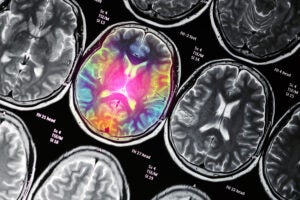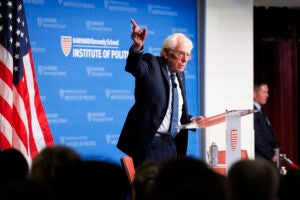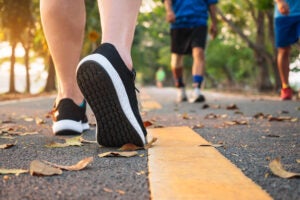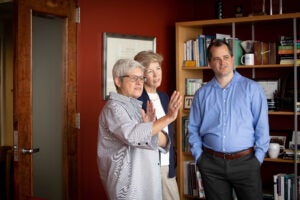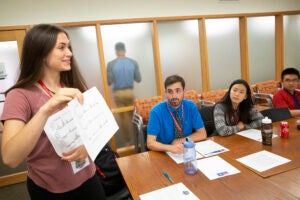Tag: Faculty of Arts and Sciences
-
Nation & World
A rose by any other name — could be confusing
Kanchi Gandhi is one of a small group of global experts who referees the rules of naming new plant species.
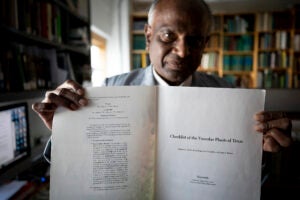
-
Nation & World
Both marathoner and sprinter
Scientists from Harvard and the University of Virginia have developed the first robotic tuna that can accurately mimic both the highly efficient swimming style of tuna, and their high speed.
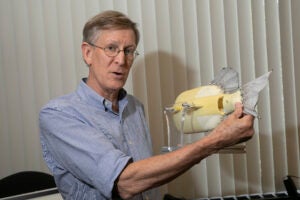
-
Nation & World
Tiny tweezers
Using precisely focused lasers that act as “optical tweezers,” Harvard scientists have been able to capture and control individual ultracold molecules – the eventual building-blocks of a quantum computer – and study the collisions between them in more detail than ever before.
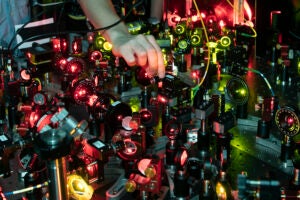
-
Nation & World
Playing our song
Samuel Mehr has long been interested in questions of what music is, how music works, and why music exists. To help find the answers, he’s created the Music Lab, an online, citizen-science project aimed at understanding not just how the human mind interprets music, but why music is a virtually ubiquitous feature of human societies.
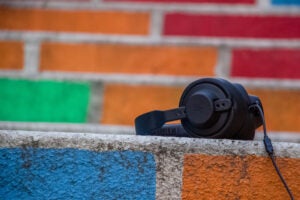
-
Nation & World
Black hole project nets Breakthrough Prize
The nearly 350 astronomers, postdoctoral fellows, graduate students, and undergraduates who worked for more than a decade to capture the first-ever image of a black hole have been named the recipients of the 2020 Breakthrough Prize in Fundamental Physics.
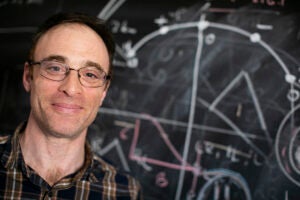
-
Nation & World
Lessons in learning
Study shows students in ‘active learning’ classrooms learn more than they think
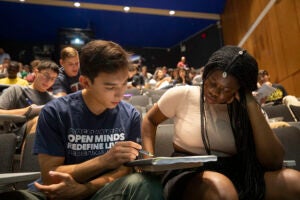
-
Nation & World
How a zebrafish model may hold a key to biology
Martin Haesemeyer set out to build an artificial neural network that worked differently than fish’s brains, but what he got was a system that almost perfectly mimicked the zebrafish — and that could be a powerful tool for understanding biology.
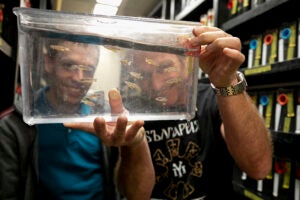
-
Nation & World
Mental health as a diversity issue
Faculty of Arts and Sciences Diversity Summer Panel focuses on the impacts of mental illness in the workplace and what can be done about it.
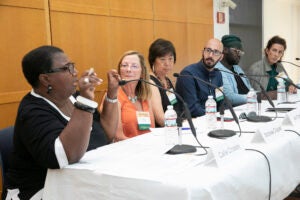
-
Nation & World
Want to avoid climate-related disasters? Try moving
For decades, the response to flooding and hurricanes was a vow to rebuild. A.R. Siders believes the time has come to consider managed retreat, or the practice of moving communities away from disaster-prone areas to safer lands.
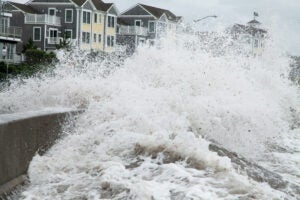
-
Nation & World
Clever crows
A new paper, co-authored by Dakota McCoy, a graduate student working in the lab of George Putnam Professor of Biology David Haig, suggests that, after using tools, crows were more optimistic.
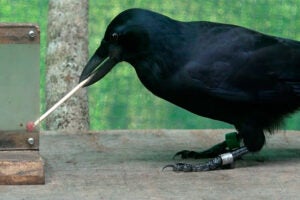
-
Nation & World
How the moon came to be
A fourth-year graduate student in the lab of Professor of Geochemistry Stein Jacobsen, Yaray Ku is working on a project aimed at understanding how the moon formed, and to do it, she’s working with actual lunar samples.
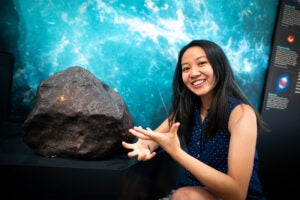
-
Nation & World
What fuels prejudice?
A postdoctoral fellow working in the lab of Psychology Professor Matt Nock,Brian O’Shea is the lead author of a study that suggests racial tension may stem not from different groups being exposed to each other, but fear of a different sort of exposure — exposure to infectious diseases. The study is described in a July…
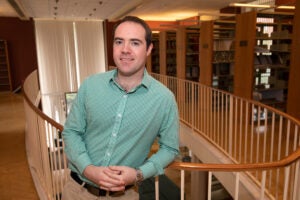
-
Nation & World
Spreading seeds of life
Scientists at the Institute for Theory and Computation have made a comprehensive calculation suggesting that panspermia could happen, and have found that as many as 10 trillion asteroid-sized objects might exist that carry life.
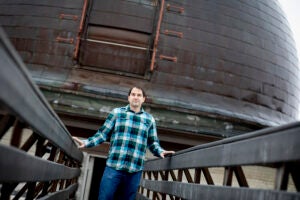
-
Nation & World
Four deans, and their journeys
Four Harvard deans discuss their role models and their work as top administrators.
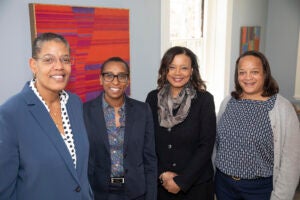
-
Nation & World
Unpacking the power of poverty
Social scientists have long understood that a child’s environment can have long-lasting effects on their success later in life. Exactly how is less well understood. A new Harvard study points to a handful of key indicators, including exposure to high lead levels, violence, and incarceration, as key predictors of children’s later success.
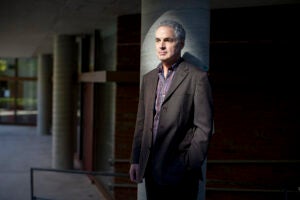
-
Nation & World
Cities’ wealth gap is growing, too
Harvard research has found that separation between rich and poor communities has increased during the past 40 years.
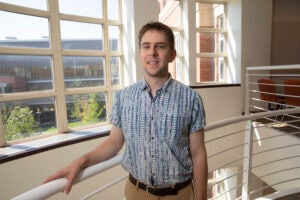
-
Nation & World
Martin Kilson, College’s first tenured African American professor, dies at 88
Martin Kilson, who in 1969 became the first African American to be named a full professor at Harvard College, died on April 24.
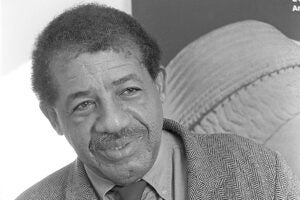
-
Nation & World
Before the Big Bang
Harvard researchers are proposing using a “primordial standard clock” as a probe of the primordial universe. The team laid out a method that may be used to falsify the inflationary theory experimentally.
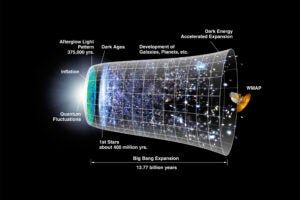
-
Nation & World
Identifying exotic properties
Though they have unusual properties that could be useful in everything from superconductors to quantum computers, topological materials are frustratingly difficult to predictably produce. To speed up the process, Harvard researchers in a series of studies develop methods for efficiently identifying new materials that display topological properties.
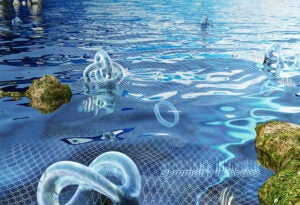
-
Nation & World
‘Seeing the unseeable’
A years-long effort by dozens of researchers at the Harvard-Smithsonian Center for Astrophysics reveals the first-ever image of a supermassive black hole.
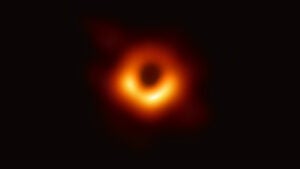
-
Nation & World
A black hole, revealed
Researchers at the Event Horizon Telescope (EHT) just unveiled the first-ever image of a black hole, which captures what EHT Director Sheperd Doeleman called “a one-way door from our universe.”
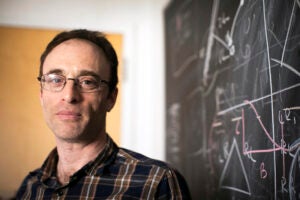
-
Nation & World
Breaking down ‘Beowulf’
Using a statistical approach known as stylometry, which analyzes everything from the poem’s meter to the number of times different combinations of letters show up in the text, a team of researchers found new evidence that “Beowulf” is the work of a single author.
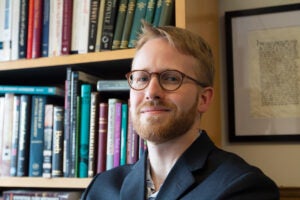
-
Nation & World
Coding for a cause
Professor Jelani Nelson develops new algorithms to make computer systems work more efficiently, but also takes his educational efforts beyond Harvard’s walls. He founded AddisCoder, a program that teaches students in Ethiopia how to code.
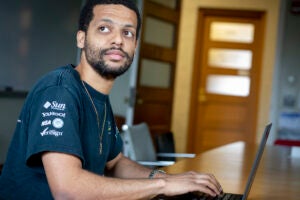
-
Nation & World
The genetics of regeneration
Led by Assistant Professor of Organismic and Evolutionary Biology Mansi Srivastava, a team of researchers is shedding new light on how animals perform whole-body regeneration, and uncovering a number of DNA switches that appear to control genes used in the process.
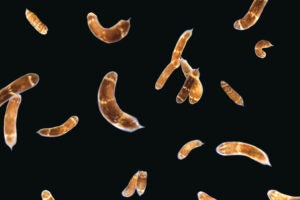
-
Nation & World
Should landlords have to share what’s been bugging them?
It might seem crazy for landlords to tell potential tenants about past bedbug infestations, but Alison Hill believes it will pay off in the long run. In a study, Hill found that while landlords would see a modest drop in rental income in the short term, they would make that money back in a handful…
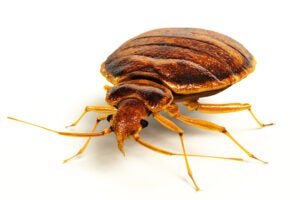
-
Nation & World
Following conflict, a turn to the divine
Working with a team of international researchers, Harvard scientists gathered survey data in several locations around the globe and found that, following the trauma of seeing a friend or loved one killed or injured during conflict, many became more religious.
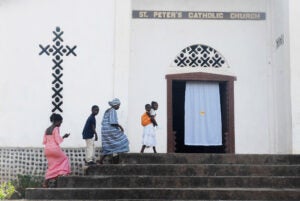
-
Nation & World
Seeing things in a different light
Harvard researchers are using a chemical process known as triplet fusion upconversion to transform near-infrared photons into high-energy photons. The high-energy photons could be used in a huge range of applications, including a new type of precisely targeted chemotherapy, in which low-energy infrared lasers that penetrate deep into the body could be used to transform…
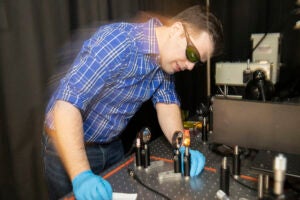
-
Nation & World
Making sense of how the blind ‘see’ color
A new Harvard study suggests that although the congenitally blind experience abstract visual phenomena such as rainbows and color differently, they still share with the sighted a common understanding of them.
